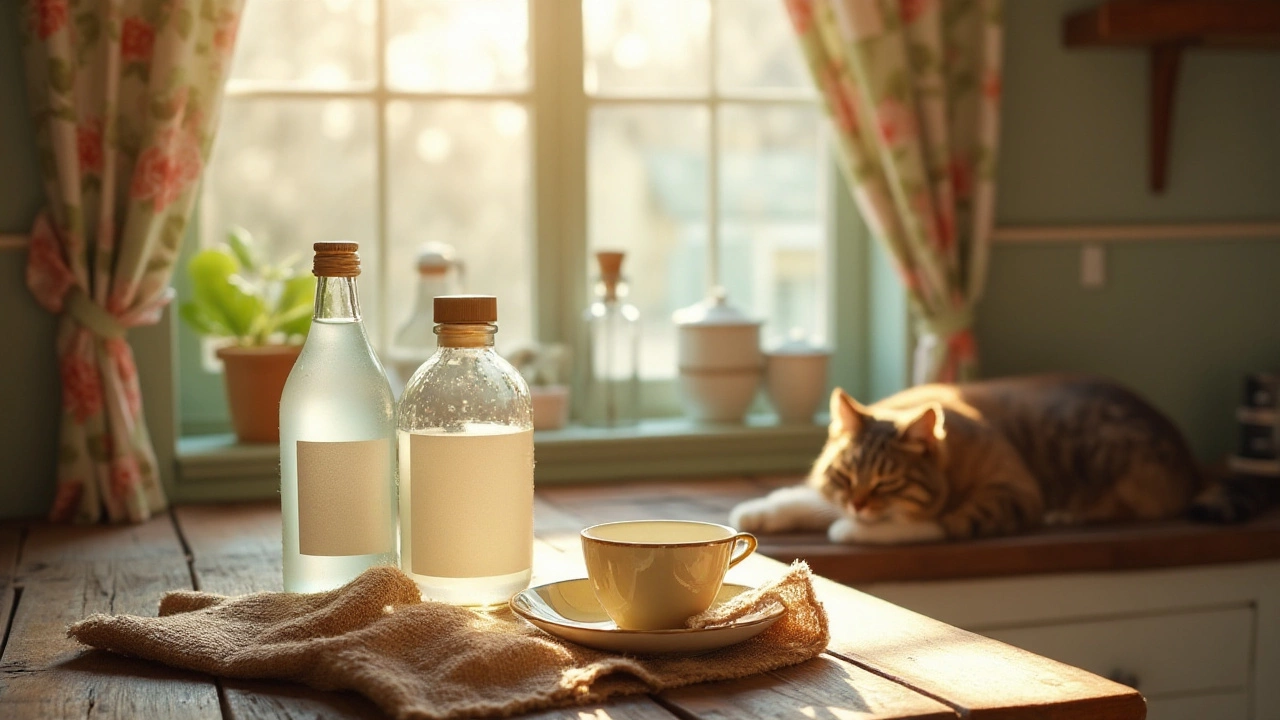Hydrogen Peroxide: Your Everyday Cleaning Powerhouse
Hydrogen peroxide is a cheap, food‑grade liquid that kills germs and lifts stains without harsh chemicals. Most households already have a 3% bottle in the medicine cabinet, but many never think of using it for cleaning. It works like a mild bleach, breaking down organic matter so dirt, mould, and odors disappear. Below you’ll find practical ways to turn that simple bottle into a multi‑task cleaner.
How to Use Hydrogen Peroxide Safely
First rule – never mix peroxide with vinegar or bleach. The reaction can release dangerous gases. Stick to one ingredient at a time and rinse well after each job. Always wear gloves if you’re cleaning a large area; the liquid can irritate skin when left on too long. Test a hidden spot before you spray on fabrics or painted surfaces, just in case the colour lifts.
For most jobs, a 3% solution works fine. If you need a stronger punch, you can dilute 6% peroxide with an equal part of water, but remember the stronger mix can fade fabrics faster. Store the bottle in a cool, dark place; sunlight breaks down the active ingredient and reduces its effectiveness.
Top Cleaning Hacks with Hydrogen Peroxide
Streak‑free windows – Fill a spray bottle with equal parts hydrogen peroxide and water. Spray on the glass, let it sit a minute, then wipe with a clean microfiber cloth. The peroxide leaves a clean shine and kills any mould spores that love window sills.
Bathroom grime – Apply peroxide directly to tile grout, shower doors, or the toilet bowl. The fizzing action lifts soap scum and kills bacteria. For tough stains, sprinkle a little baking soda first, then spray peroxide and watch it bubble. Scrub lightly and rinse.
Carpet and upholstery stains – Blot the spot with a cloth soaked in peroxide, then sprinkle baking soda on top. Let it dry, then vacuum. This combo tackles wine, coffee, and even blood stains without leaving a bleachy mark.
Kitchen disinfecting – Wipe countertops, cutting boards, and fruit bowls with a spray of undiluted peroxide. It evaporates quickly, leaving surfaces safe for food prep. For a fresh scent, add a few drops of lemon essential oil after the peroxide dries.
Mould removal – Spray peroxide on bathroom tiles, garage walls, or any damp area where mould grows. Let it sit 10‑15 minutes, scrub, and rinse. The peroxide kills the spores and helps prevent regrowth.
Hydrogen peroxide is also great for whitening whites in the laundry. Add a cup to the wash cycle and you’ll notice brighter sheets and towels without harsh bleach. Just keep it away from silk or delicate fabrics.
Remember, the key to success is consistency. A quick spray after cooking, a weekly bathroom wipe‑down, or a monthly deep‑clean of carpets keeps grime from building up. You’ll spend less time scrubbing and more time enjoying a fresh home.
At Dandy Fox Cleaning Services we love the simplicity of peroxide‑based solutions. They’re safe for families, easy on the wallet, and eco‑friendly. If you ever need a professional touch, give us a call – we’ll bring the same effective, green approach to any job, big or small.

How to Clean a Mattress with Hydrogen Peroxide: Simple Steps for a Fresh Sleep Surface
Cleaning a mattress might not be glamorous, but it's essential for a good night's sleep. Using hydrogen peroxide can effectively tackle stains and odors without harsh chemicals. This article explores practical steps to clean your mattress, insightful facts about why hydrogen peroxide works, and tips for keeping your bed in top-notch condition. Discover how to maintain a fresh sleeping environment with a simple, efficient approach.
Read More
Vinegar vs. Hydrogen Peroxide: The Best Green Disinfectant
Choosing the right disinfectant is critical for maintaining a clean and healthy home. This article delves into the eco-friendly options of vinegar and hydrogen peroxide, comparing their effectiveness in fighting germs and bacteria. Understanding their natural properties can help you select the most environmentally kind option for your cleaning routine. This exploration looks at the pros and cons of each, revealing surprising facts about their usage and offering practical cleaning tips.
Read More